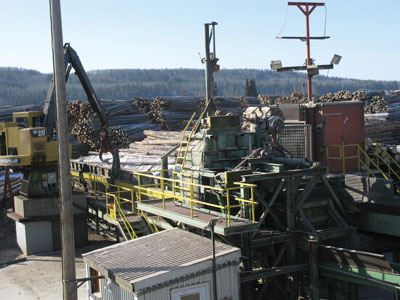
Biomass harvest improves forest health
June 4, 2012
By Robert W. Gray
There is a significant volume of biomass on the landscape in British Columbia that needs to be removed to improve ecosystem resilience and sustainability, and reduce the threat of wildfires
There is a significant volume of biomass on the landscape in British Columbia that needs to be removed to improve ecosystem resilience and sustainability, and reduce the threat of wildfires. Standing in the way of dramatically increasing biomass extraction are market impediments and access to feedstock constraints.
 |
|
| To help protect British Columbia’s forests, biomass needs to become a priority.
|
Recently, the Commissioner of Public Lands for the State of Washington, Peter Goldmark, announced a Tier Two Forest Health Hazard Warning. The concern is that tree mortality is predicted to increase significantly across 900,000 hectares of eastern Washington due to a combination of climate change and past management, which has left forests overcrowded and highly stressed. And the same can be seen in British Columbia.
Another warning came during the American Association for the Advancement of Science conference in February 2012 when Dr. Mike Flanagan from Natural Resources Canada predicted that climate warming is already leading to longer fire seasons and more intense fire behaviour.
Restoring ecosystem sustainability and resilience in the face of a warming climate, and countless disturbance agents, is predicated on reducing the stress to the system. It means reducing density through lowering competition for moisture, nutrients and sunlight to make healthier trees, as well as reducing fuel loading to help make more resilient forests.
Unfortunately, the material we need from the forest has very little economical value as a sawlog, which is one of the forest’s higher value-added products. It does, however, have value as a raw resource in the bioenergy sector, where it can be converted into such forms as wood pellets, syngas and biochar.
There is a complicated set of variables involved in determining how economically feasible it is to access biomass on the landscape, such as the costs associated with getting the wood to the landing, sorting and processing, and transporting it to a manufacturing facility. Difficult terrain, low-volume stands and long transport distances all combine to increase the cost of the raw resource and dictate which stands can be treated. Obviously, the higher the value of the end product, the more biomass you can access economically.
Currently, much of the waste biomass is being steered toward power (electricity) production. At current rates, the sale of power from cogeneration plants is so low that the production of electricity is subsidized. The subsidies come in many forms, such as reduced stumpage on Crown timber sales, harvest operations and hazardous fuel treatments that provide free feedstock, free mill site waste and more.
This fact has led to a scramble on the part of the industry and government to identify all the sources of low-cost feedstock currently residing in the system. As a consequence of this focus on the electricity market and its limitations, significant volumes of biomass on the landscape are not being accessed, and will continue to be a significant fire hazard. Most importantly, the province is losing out on a potentially lucrative global demand for solid and liquid bioenergy products that could in turn generate significant employment and tax revenues.
Reports such as the recent Bio-Economy Report, commissioned by the B.C. Ministry of Jobs, Tourism and Innovation, and Dovetail Partners, Inc.’s 2011 report, Potential Impacts of Climate and Energy Policy on Forest Sector Industries: Providing Incentives for Bio-Energy While Protecting Established Biomass-Based Industries, have correctly identified the problem as one of transition and transformation out of old industries and into new ones.
For the forest health crisis in British Columbia, the B.C. government should lead the process of sector transformation, determine the highest and best use of the biomass so that it constitutes a social and economical benefit to not only Canadian and multinational corporations but also the rural communities of British Columbia, and begin the transformation sooner rather than later.
For more information, please see the complete article online at: www.canadianbiomassmagazine.ca/content/view/3278/133/
Print this page